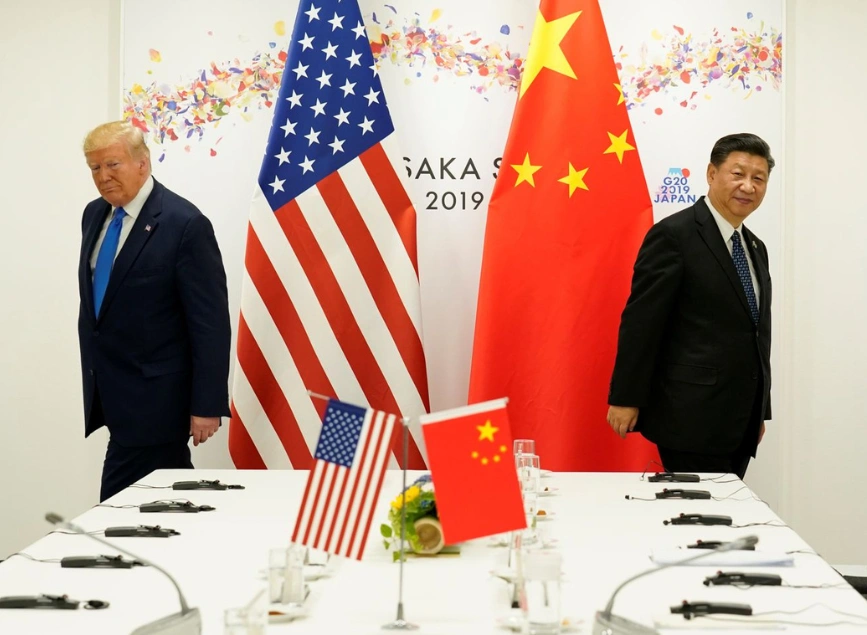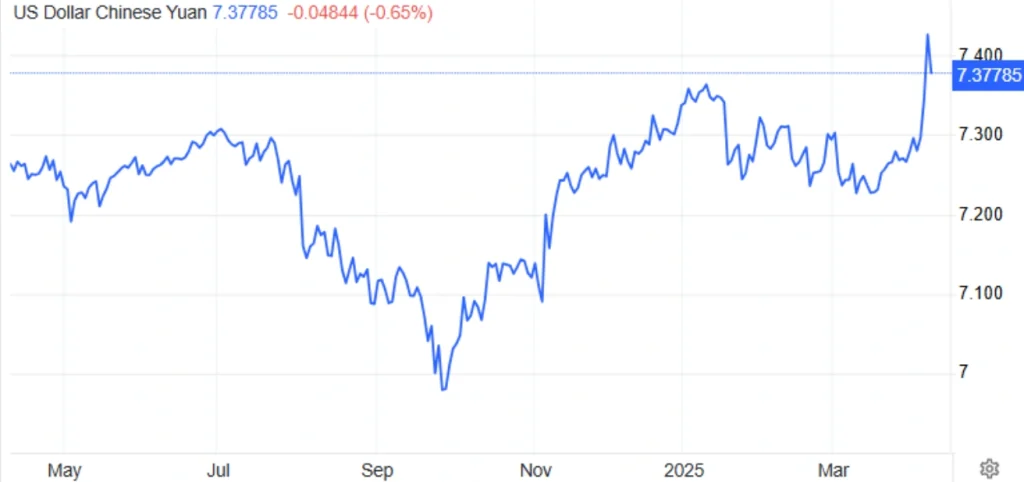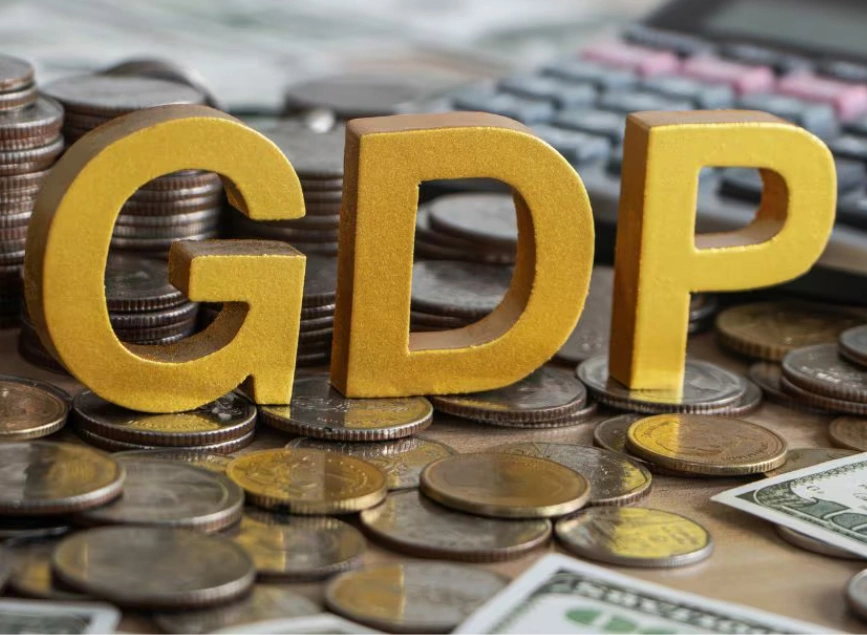
Beijing’s Economic Response to Washington: China Lets Yuan Fall to Strengthen Exports
In recent months, the ongoing trade war between China and the United States has taken a new turn. China has strategically allowed the yuan to depreciate, sending ripples through global financial markets. This move is part of a broader effort to counter the economic pressure exerted by the U.S. through heavy tariffs. Let’s explore how these developments are reshaping the global economic landscape.
Yuan Depreciation in Response to U.S. Tariffs
A Sharp Decline in the Yuan
The yuan has recently seen a significant drop in the offshore market, reaching 7.38 against the U.S. dollar. This marked a dramatic shift, with the yuan continuing its decline to 7.43, the lowest level since China’s current exchange rate system was implemented in 2010. This depreciation is a direct response to the intensifying trade war between the U.S. and China.
At the same time, the U.S. dollar index also saw a reduction, as global investors reassessed the consequences of the escalating tariff dispute between the two largest economies in the world.
China’s Countermeasure to New U.S. Tariffs
In retaliation to the U.S. tariffs, China has taken several key actions:
Imposed an 84% tariff on U.S. goods, a sharp response to the 104% tariff that had been applied to Chinese products under the Trump administration.
Added 12 more U.S. companies to its export restriction list, applying additional pressure on the U.S. economy’s supply chain.
Maintained a low official exchange rate for the yuan, directly aiming to boost China’s export competitiveness.
These combined actions have contributed to the further depreciation of the yuan, while simultaneously enhancing the appeal of Chinese exports on the global stage.

Understanding China’s Managed Float Exchange Rate System
China operates a managed float system for its currency, where the People’s Bank of China (PBoC) determines the daily reference rate for the yuan and allows limited fluctuations around this set rate. This allows China to maintain a degree of control over its currency value while responding to market forces.
Tools for Yuan Management
China utilizes several mechanisms to control the yuan’s value:
Direct market intervention: The PBoC can step in to buy or sell the yuan in the foreign exchange market to stabilize its value.
Setting weaker daily reference rates: The PBoC often sets a lower reference rate to encourage the yuan’s depreciation.
Capital controls: These controls limit the flow of money in and out of the country, which helps manage the yuan’s value.
Monetary policies: China has employed various easing policies to stimulate economic activity and support the yuan.
The Broader Economic and Geopolitical Impact
The depreciation of the yuan has significant effects on both China’s domestic economy and its international trade relations.
Export Competitiveness: As the yuan weakens, Chinese products become more competitive on the global market, especially against U.S. and European exports. This bolsters China’s export sector, which is crucial to its economic growth.
Inflation Risks: The weaker yuan also makes imports more expensive, potentially leading to higher inflation within China, particularly in consumer goods.
Currency Tensions with the U.S.: This move has intensified currency tensions between China and the United States. With the U.S. already grappling with trade imbalances, the yuan’s depreciation could prompt further measures from Washington, escalating the economic standoff.
Geopolitical Consequences of China’s Actions
China’s recent actions are not just economic; they are deeply geopolitical as well:
Technology and Supply Chain Tensions: The addition of American companies to China’s export restrictions list signifies a new phase in the ongoing technology and supply chain war. This marks an increasing effort to reduce reliance on U.S. technology and companies, part of the broader trend of “decoupling” the two economies.
Global Investment Flows: The gradual decoupling of China and the U.S. may have long-term consequences for global investment flows. As each country pulls away from the other, it will force investors to reconsider their portfolios and strategies on a global scale.
Official Chinese Government Position
Chinese Prime Minister Li Keqiang recently affirmed that China’s macroeconomic policies are specifically designed to adapt to unstable global conditions. He expressed confidence in the sustainable growth of China’s economy, despite the pressures exerted by both domestic challenges and external trade conflicts.
Conclusion: A New Phase in Global Economic Tensions
The intentional depreciation of the yuan and China’s strategic responses to U.S. tariffs signal the beginning of a new phase in global economic tensions. These actions have the potential to reshape not only the future of China’s economy but also the dynamics of global trade.
Increased Volatility: If the yuan continues to weaken, global currency, stock, and commodity markets are likely to experience more volatility.
Investor Monitoring: Investors should pay close attention to developments in China’s monetary policies, the trajectory of trade negotiations, and the U.S. government’s response to these economic maneuvers.
The coming months will be critical in determining whether these economic and geopolitical shifts will lead to further destabilization or a new phase of cooperation and balance between China and the rest of the world.
Share
Hot topics

What Is GDP? A Complete Guide to Gross Domestic Product
GDP or Gross Domestic Product is one of the most powerful indicators used in global economics. It plays a central role in the decision-making processes of investors, central banks, governments,...
Read more




Submit comment
Your email address will not be published. Required fields are marked *